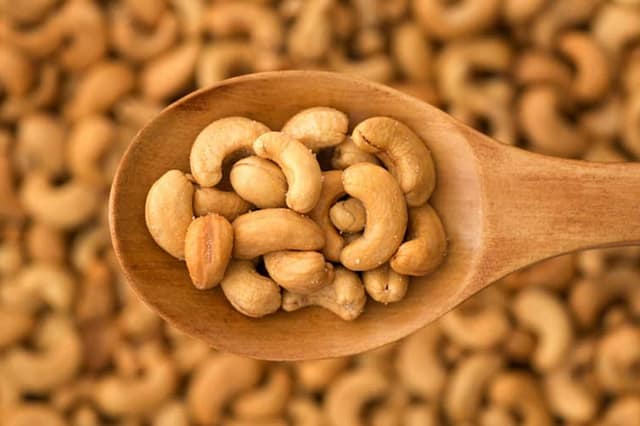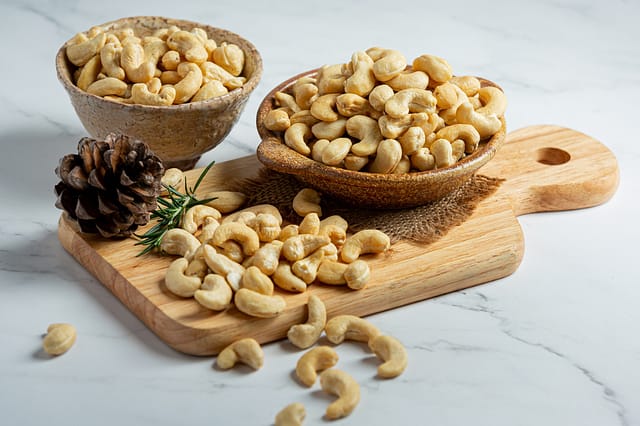Broken Cassia
When it comes to natural health remedies, few herbs offer the gentle yet potent properties of broken cassia. Known for its cleansing and detoxifying effects, broken cassia has carved a niche in both traditional and modern wellness circles. Used for centuries, especially in Eastern medicine, this humble herb is best known for supporting digestion and promoting natural detoxification. Whether steeped as tea or blended into wellness recipes, broken cassia continues to gain traction among herbal enthusiasts and health-conscious individuals alike.

What is Broken Cassia?
Broken cassia refers to dried, fragmented leaves and pods of Senna obtusifolia or similar plants in the Cassia genus. Though sometimes confused with cinnamon cassia (Cinnamomum cassia), it is entirely different. Belonging to the Fabaceae family, this herbal product is typically used as a mild laxative and detoxifying tea.
The leaves are broken during processing to allow for quicker steeping and stronger infusions. Often sold in health stores as “senna leaves” or “Chinese herbal tea”, broken cassia is especially popular in Asia and Africa, where it is frequently used in traditional medicine.

The History and Origins of Broken Cassia
The roots of using broken cassia trace back to ancient China and Egypt. In Traditional Chinese Medicine (TCM), it is referred to as “Jue Ming Zi” and was used to treat liver issues, digestive stagnation, and eye strain. Egyptian physicians as early as 9th century A.D. documented its usage as a purgative for cleansing the bowels.
Its global spread accelerated through trade along the Silk Road. Over time, it became an integral part of herbal traditions in Ayurveda, Unani, and folk medicine.
Types of Cassia Plants
There are several types of plants under the cassia umbrella:
- Cassia angustifolia: Native to India; known for potent laxative properties.
- Senna obtusifolia (Sicklepod): Often used for broken cassia production.
- Cassia tora: Used in cosmetics and pharmaceuticals.
Each type carries subtle differences in potency and applications, but all possess similar core compounds like anthraquinones, responsible for the laxative effect.
How Broken Cassia is Made
Harvesting begins when cassia plants mature—typically in late summer. Leaves and seed pods are carefully dried, then broken mechanically to reduce them into steepable fragments. The process ensures the compounds infuse quickly and effectively into hot water.
Proper drying is crucial. If done incorrectly, moisture retention can cause spoilage. Most quality producers sun-dry the herb under controlled humidity to maintain its chemical profile.
Nutritional Profile of Broken Cassia
While not typically consumed for calories or protein, broken cassia is rich in beneficial plant compounds:
| Nutrient/Compound | Role |
|---|---|
| Anthraquinones | Stimulate bowel movement |
| Flavonoids | Anti-inflammatory and antioxidant |
| Aloin | Gentle laxative agent |
| Emodin | Supports liver function |
Though not a nutritional powerhouse, its herbal profile makes it a functional food in detox regimens.
Traditional Uses in Herbal Medicine
From treating constipation to improving eyesight, broken cassia plays several roles in folk remedies:
- Liver support: Aids in clearing liver heat.
- Eye health: Believed to relieve red or tired eyes.
- Weight loss aid: Used in slimming teas and detox programs.
- Relief from hypertension: When paired with other herbs.
These traditional applications have been handed down through generations and are still practiced today, particularly in Chinese and African traditional medicine systems.
Scientific Research on Broken Cassia
Recent studies support many traditional claims. For example, a 2021 study in the Journal of Ethnopharmacology demonstrated that senna-based teas (including broken cassia) effectively induced bowel movements in constipated patients with minimal side effects.
Another clinical review highlighted the herb’s potential in managing mild hypertension and improving serum lipid profiles. However, most researchers caution that long-term use needs more exploration.
Broken Cassia for Weight Loss
Looking to shed a few pounds naturally? Broken cassia might just be your new best friend. Its laxative effect helps reduce water retention and bloating, giving the body a lighter feeling.
However, weight loss is more of a byproduct than a primary function. When used with a balanced diet and regular movement, it can support gentle body cleansing, which might contribute to shedding unwanted weight over time.
Broken Cassia for Constipation Relief
Thanks to its natural anthraquinones, it stimulates peristalsis in the intestines—encouraging regular bowel movements. Most users experience relief within 6–12 hours after drinking the tea.
It’s considered especially helpful for those with occasional constipation due to travel, stress, or dietary changes. That said, it should not replace long-term gut health strategies like fiber intake and hydration.
Detoxifying Effects of Broken Cassia
Feeling sluggish or weighed down by a heavy meal? In that case, a warm cup of tea might offer the gentle detox your body truly needs. In fact, broken cassia has long been used for its natural cleansing properties.
By supporting bowel elimination, it indirectly aids in removing waste and toxins. Consequently, this can lead to noticeable improvements in how you feel. For example, some users report clearer skin, improved mood, and reduced puffiness after completing a detox cycle using the tea. Moreover, these benefits often appear within just a few days of use, making it a favored option in many natural wellness routines.
How to Brew Broken Cassia Tea
Here’s a basic recipe for brewing the perfect cup:
Ingredients:
- 1 tsp broken cassia
- 1.5 cups hot water (not boiling)
Instructions:
- Add the broken cassia to a teapot or infuser.
- Pour hot water over it.
- Let it steep for 6–10 minutes.
- Strain and drink warm.
Optional: Add lemon, ginger, or honey for flavor.
Best Time to Drink Broken Cassia Tea
Evening is typically the best time to enjoy this tea, especially for its laxative effect. Drinking it after dinner helps prepare the body for a gentle cleanse by morning.
Avoid drinking before a busy day or right before traveling—you’ll thank yourself later!
Does Broken Cassia Have Caffeine?
Nope. Unlike green or black tea, broken cassia is caffeine-free. This makes it a great choice for those sensitive to stimulants or looking to wind down in the evening.
Potential Side Effects of Broken Cassia
While generally safe, overuse can lead to:
- Cramping
- Diarrhea
- Dehydration
- Electrolyte imbalance
Always follow recommended dosages and avoid extended use without a healthcare provider’s advice.
Who Should Avoid?
Not everyone should sip on this tea. Avoid if you are:
- Pregnant or breastfeeding
- Under 12 years old
- Suffering from inflammatory bowel disease
- Taking heart or diuretic medications
Interactions with Medication
Because of its laxative properties, broken cassia may reduce the absorption of certain oral medications. Space your tea consumption at least 2–3 hours apart from any pills or supplements.
How Long Does It Take to Work?
Most people notice an effect within 6–12 hours of drinking. As a result, it makes sense to consume it in the evening. Consequently, this allows the herb to work overnight, ensuring results by the next morning. Furthermore, many users report improved comfort and relief after just one dose. Therefore, broken cassia is best used when you can stay near home during its effect window.
Can You Drink It Every Day?
Short-term use? Yes. Long-term use? Not advisable. In fact, continuous reliance on laxatives—natural or not—can lead to dependency and reduced bowel function over time. Moreover, daily use may interfere with your body’s natural elimination process. Instead, it’s best reserved for occasional support. In other words, consider using it during travel, after heavy meals, or as part of a short detox plan. As always, moderation is key.
How to Store It Properly
To maintain freshness, store it in a cool, dark place inside an airtight container. In addition, always avoid moisture, which can lead to spoilage and mold. Ideally, place it in a glass jar in your pantry or herbal cabinet. Properly stored, it can stay fresh for up to 12 months. Therefore, buying in small batches is a smart move if you use it occasionally.
Buying Guide: Choosing Quality Broken Cassia
Look for:
- Organic certification
- Clear labeling of botanical source
- Loose leaf form over powdered
- No added ingredients

Loose Leaf vs. Tea Bags
Loose leaf is typically more potent and allows for customization. Tea bags, while convenient, may contain lower-quality herb dust. Choose based on your priorities.
DIY Recipes Using Broken Cassia
Try this blend:
- 1 tsp broken cassia
- 1 tsp dried ginger
- ½ tsp fennel seeds
- Steep for 8–10 minutes
Great for digestive support and flavor!
What Does it Taste Like?
It has a mild earthy bitterness with subtle grassy notes. Some detect hints of licorice. Add lemon or mint for enhanced taste.
Frequently Asked Myths
Is it addictive?
Only if overused for a long time.
Is it the same as cinnamon cassia?
No. Completely different plants.
Will it make me lose fat?
It aids in detox and water weight, not fat loss directly.
Can kids drink it?
Not recommended under 12 years.
Is it safe during pregnancy?
No, it may induce uterine contractions.
Does it damage the liver?
No evidence supports this when used moderately.
Conclusion: Should You Try it?
If you’re seeking a gentle herbal remedy for detox, digestion, or occasional constipation, broken cassia is a reliable choice. Affordable, natural, and effective—when used correctly—it can be a beneficial addition to your wellness toolkit. Just be mindful of frequency and dosage, and always consult a healthcare provider if in doubt.
Stay Connected with Havigo Vietnam
Havigo Company Limited is active in the agricultural export sector, and we aim to bring high-quality Vietnamese agricultural products, including spices, rice, beans, and fruits, to the global market. We supply you with high-quality products at competitive prices. If you are interested in importing Vietnamese cashew, please contact us via WhatsApp: +84 886970996 for excellent support.
We are confident in our ability to consistently deliver in a way that meets the highest quality standards while offering competitive pricing within the market.
For more information about our products, please visit our LinkedIn







